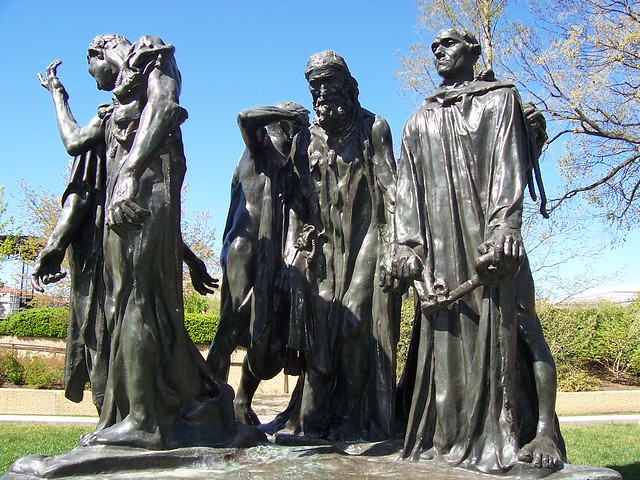
The Burghers of Calais
The Burghers of Calais by Auguste Rodin. Magnificent! One of my all time favourite sculptures. One day I intend to sculpt a monumental work entitled 'The Burghers of Uxbridge'.
The Burghers of Calais, commemorating an episode during the Hundred Years' War between England and France, is probably the best and certainly the most successful of Rodin's public monuments. Rodin closely followed the account of the French chronicler Jean Froissart (1333 or 1337–after 1400) stating that six of the principal citizens of Calais were ordered to come out of their besieged city with head and feet bare, ropes around their necks, and the keys of the town and the caste in their hands. They were brought before the English king Edward III (1312–1377), who ordered their beheading. Rodin has portrayed them at the moment of departure from their city led by Eustache de Saint-Pierre, the bearded man in the middle of the group. At his side, Jean d'Aire carries a giant-sized key. Their oversized feet are bare, many have ropes around their necks, and all are in various states of despair, expecting imminent death and unaware that their lives will ultimately be saved by the intercession of the English queen Philippa. The arrangement of the group, with its unorthodox massing and subtle internal rhythms, was not easily settled, and the completed monument, cast in bronze by the Le Blanc-Barbedienne foundry, was not unveiled in Calais until 1895. The Metropolitan Museum's bronze is a lost-wax casting made from the plaster model in the Musée Rodin in Paris.
No comments:
Post a Comment